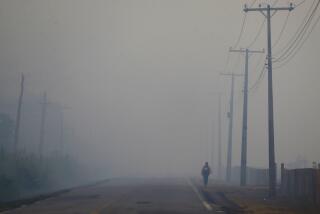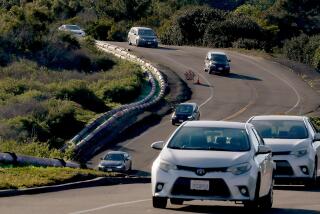Portugal Hopes to Shift Into High, Fix Roads
- Share via
ESCUSA, Portugal — Under a cloudless sky a brand-new car bounced past an olive grove, hit a pothole the size of a bathtub and skidded along a stretch of cobble-stoned paving, coming to rest next to a startled mule.
The incident spoke volumes about a problem facing Western Europe’s poorest country.
Portugal is rapidly changing from an agricultural land to an industrial nation with one of Europe’s fastest growing economies. But officials say that until it gets its roads straight it is going nowhere.
“A top priority is infrastructure--we have to modernize everything connected to communications and accessibility,” Planning Minister Luis Valente de Oliveira told Reuters.
“In the past we did not invest enough and this is now a handicap.”
It is not a laughing matter for the minister. Popular jokes abound about a country which has only about 125 miles of highway--most of it linking its two main cities, Lisbon and Oporto.
“The only good roads in Portugal are not built yet,” goes one joke heard near this hamlet aptly named Escusa, or “pardon.”
Since Portugal joined the European Community in 1986, the economy has boasted one of Europe’s fastest growth rates of about 4%.
But countless tires bought in the booming consumer demand have been torn to shreds on the pitted two-lane country roads that create havoc for trucks carrying vital goods across the country.
The losses are human as well as commercial. The penchant for speed turns treacherous when drivers forge their own third lane to pass slow-moving vehicles--contributing to one of Europe’s highest road death tolls.
To attack the problem the government has launched a wave of projects co-financed with European Community aid to help modernize its backward railways, bridges, highways and airports.
Some $7.6 billion in EC funds will be made available for infrastructure, officials say.
Portugal’s push, launched in 1985, aims to complete more than 2,800 miles of high-grade roads and highway by 1993--and Valente de Oliveira believes the target can be reached.
More to Read
Sign up for Essential California
The most important California stories and recommendations in your inbox every morning.
You may occasionally receive promotional content from the Los Angeles Times.













